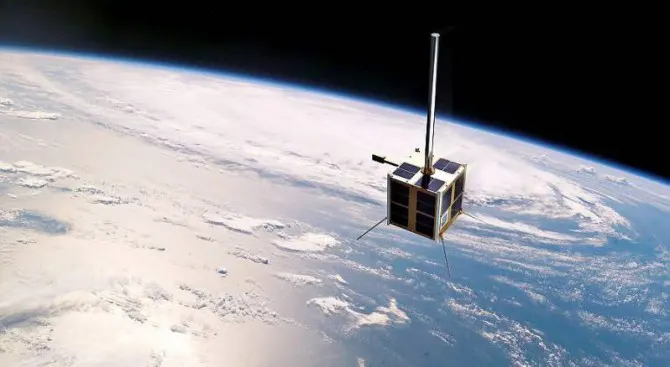SFL Celebrates Anniversaries of AISSat-1 and -2 Nanosatellite Launches

This summer SFL celebrated the launch anniversaries of the AISSat-1 and -2 nanosatellites and their remarkable legacy in Norway’s space-based Automatic Identification System (AIS) detection constellation and maritime tracking information system.
Launched in July 2010, AISSat-1 demonstrated the feasibility and performance of AIS signal detection from low-Earth orbit as a means of tracking maritime assets. The launch of AISSat-2 on July 8, 2014, further confirmed that SFL’s nanosatellite solution was ideal for operational monitoring and tracking of ships in Norwegian territorial waters.
AIS data is transmitted from vessels via a VHF signal and identifies the ship, its position, course, and speed. The satellites were developed in a collaborative project involving the Norwegian Coastal Administration, Norwegian Space Agency and the Norwegian Defence Research Establishment (FFI) to build a national maritime tracking information system that would improve the maritime safety, ship navigation, and protection of the marine environment.
The two spacecraft significantly exceeded their design lives of three years. AISSat-1 operated for nearly 12 years, while AISSat-2 captured data for more than nine. While small in size—only 20 x 20 x 20 cm – the nanosatellites offered a full suite of advanced capabilities including a three-axis attitude determination and control system, powerful on-board computer processing systems, and a triple-junction solar cell-based power system.
SFL provided the spacecraft platform and the AIS antenna, along with spacecraft-level management, systems engineering, assembly, integration, and test support. In addition, SFL was responsible for launch and commissioning on orbit, after which the spacecraft was handed over to Statsat for operations. The payload was developed by Kongsberg Seatex AS with oversight from FFI.
At the time of AISSat-2’s decommissioning in late 2023, Bjørnar Kleppe, a senior engineer at Norwegian Coastal Administration, said, “The first AIS satellites revolutionized the Norwegian authorities’ ability to monitor ship traffic in the sea areas…Today satellite-based AIS is an essential and incorporated tool in the authorities’ maritime safety and emergency preparedness work.”
Additionally, Norwegian AIS data collected from space serves as the mainstay of the Blue Justice Ocean Surveillance Program initiated by Norway in September 2023 to fight international fisheries crimes. Participants in this program share coastal data to uncover illegal fishing activities worldwide.
SFL continues to develop microspace missions for Norway under the NorSat program. NorSat-1 and NorSat-2 were launched together in July 2017 followed by NorSat-3 four years later. The NorSat-TD testbed satellite was launched in 2023, and NorSat-4 is ready for launch. NorSat-4 brings to eight the total number of missions developed by SFL for Norway.
